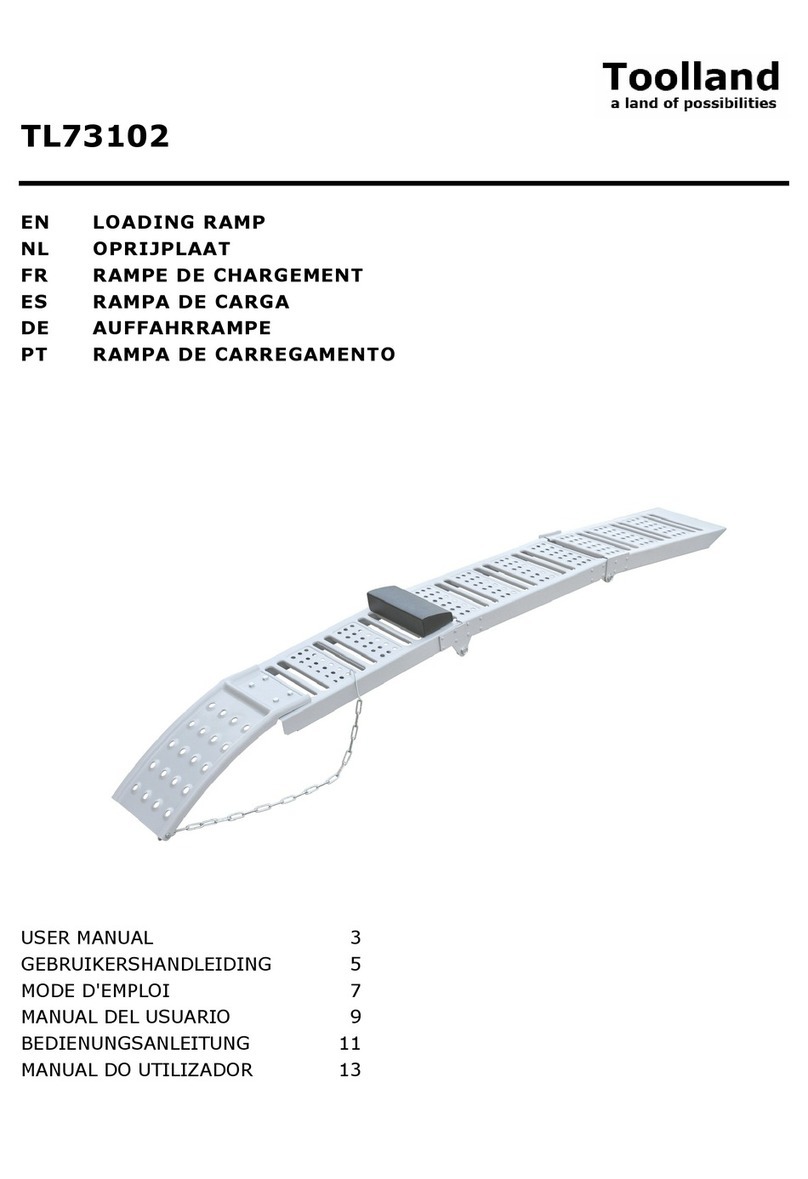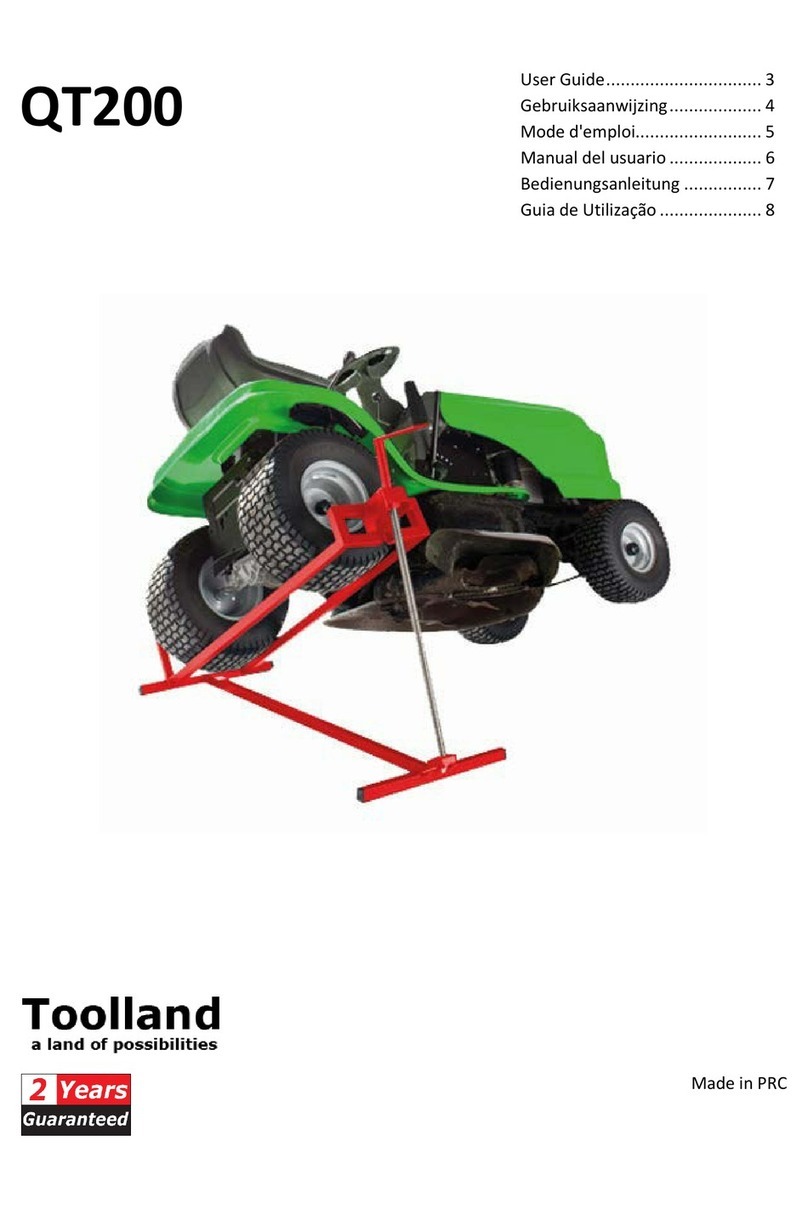
WEH200/WEH300
V. 07 –24/06/2021 8 ©Velleman nv
6. Before Use
•Before connecting the appliance to the mains make sure the mains data matches the data
on the rating plate.
•Always disconnect from the mains before making adjustments to the equipment.
•Do a no-loading test before start-up operation at first, and please check:
othe flexibility of the up/down operating switch to ensure the controlling of appliance
and lowering of the load hook.
othe flexibility of the upper limit bracket to ensure the cut-off of circuit.
othe flexibility of the lower limit bracket to ensure the cut-off circuit when the steel cable
is nearly used up.
oany abnormal sounds when starting the operation.
othe steel rope is possibly damaged (split or bent) or reaches 20 hours after using. In
this case, change the rope immediately.
•The appliance is not suitable for transporting hot and/or molten masses. In addition, it is
not suitable for use at low temperatures or in aggressive atmospheres.
•The appliance belongs to mechanical group M1.
•Ensure that the operator knows how the appliance works and how it should be operated.
•The user should always operate as set out in the operating instructions.
•The appliance is not designed for continuous operation. Its mode of operation is
intermittent without influencing the starting process.
•The rated capacity of the appliance does not vary due to the position of the load.
•Please inspect the hook before every operation for possible damage or distortion. Replace it
in time.
•The service life of the appliance is approximately 8000 cycles (excluding wearing parts).
When the appliance has completed 8000 cycles, all its mechanical parts must be checked
and overhauled.
•Operation using a residual current protective device (Red Emergency Stop Switch) offers
additional protection under danger and in emergency circumstances. To use the emergency
stop switch, screw the switch head in the arrows direction to recover operation after
removing the damages.
•Be sure that all parts are sufficiently lubricated. Daub the lubricant on the load hook, cable
drum shaft, gear box, and bearing every half a year.
•After opening the packaging, inspect the frame, the steel cable, the hook and the electric
control mechanism for signs of possible transit damage.
Assembly and Installation
•The appliance is fitted with two fastening clamps with which it must be fastened to a
rectangular tube. The dimensions of the arm must be conform with the size of the fastening
clamps and must be capable of supporting twice the rated load. We recommend that you
seek advice from a qualified technician.
•All screws must be tightened correctly. A qualified technician should check the anchoring of
the arm before the machine is started.
•Install the appliance on a steel beam. Use only the enclosed installation brackets which can
be attached to the top of the mounting casing using the screws, washers, and spring lock
washers. The steel beam must be able to withstand at least double the rated lifting
capacity of the appliance.
•The steel beam must have a diameter of 46 x 46 mm, a wall thickness of at least 2.3 mm
and a length of at least 450 mm.
•The steel beam must be securely anchored in a wall. The anchor must be installed
correspondingly sturdy in order to be able to withstand the load.
•Please be sure that the appliance is installed level and not slanted.
•The remote control must always be easily accessible and must therefore be installed at a
distance to the floor of between 0.8 m and 1.5 m.
•Insert the load hook into the hook bracket of the mounting casing when using the
additional load hook with deviating shaft.





























